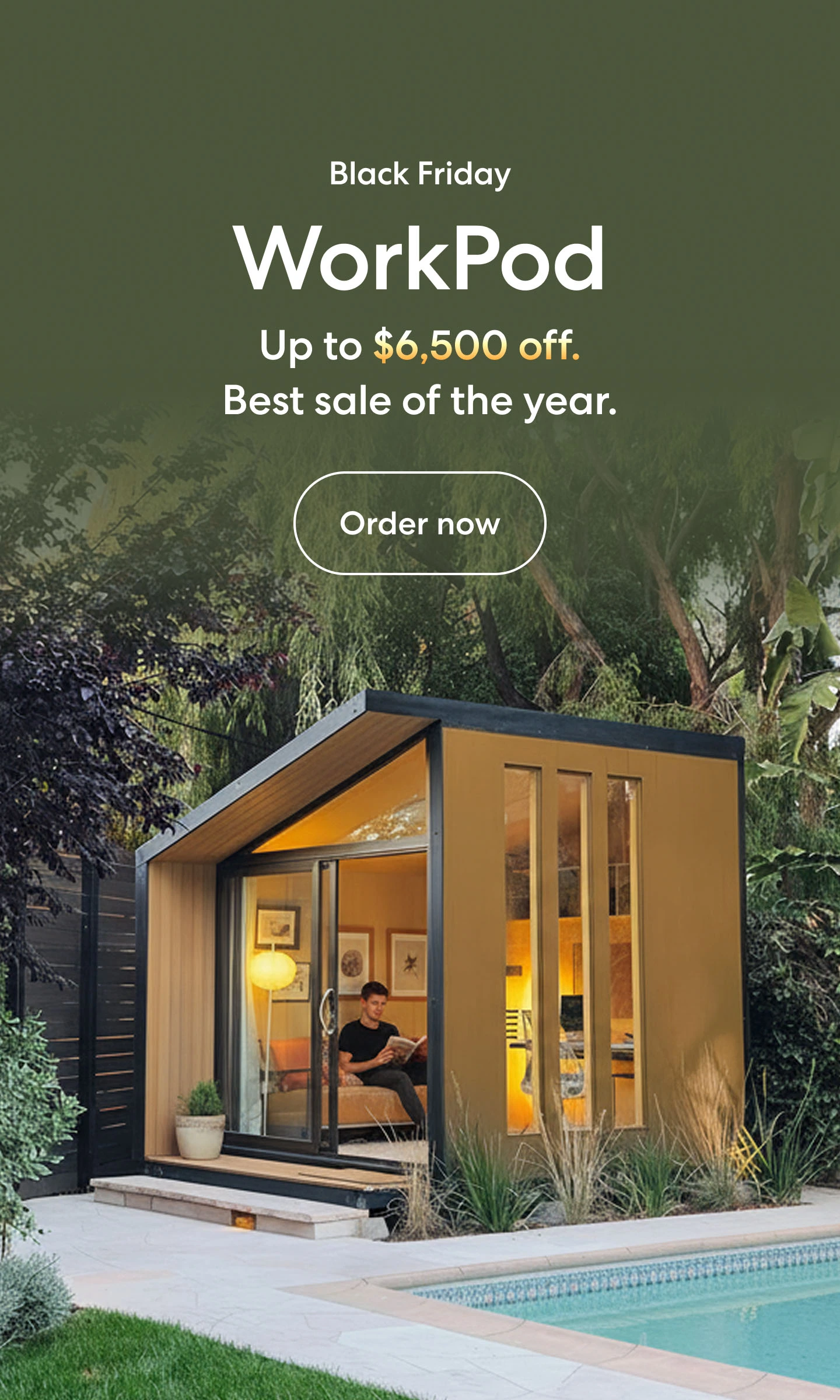
Insulated She Shed Guide for Year-Round Comfort and Use
Table of Contents
She sheds have become popular as private backyard retreats—perfect for work, hobbies, or relaxation. To enjoy these spaces year-round, proper insulation is key. Insulating your she shed helps regulate temperature and sound, making it comfortable no matter the weather or time of day.
What Is an Insulated She Shed?
An insulated she shed is a backyard structure with built-in insulation materials inside its walls, roof, and sometimes floor. Common insulation types include fiberglass batts, foam boards, and spray foam. Insulation keeps the interior warm in winter, cool in summer, and reduces noise from outside, enhancing comfort and usability.
Insulating your she shed provides:
- Comfortable year-round use, regardless of weather conditions
- Reduced energy costs thanks to better temperature control
- Noise reduction for quiet work or relaxation
- Protection of furniture and belongings from extreme temperatures
- Increased property appeal and value

How to Insulate a She Shed
Insulating a she shed properly is essential for creating a comfortable environment that can be used year-round. Whether you’re building a new she shed or retrofitting an existing one, the process involves several critical steps. Similar principles apply when constructing an insulated garden office, where careful insulation ensures comfort and energy efficiency.
1. Preparation and Sealing
Start by thoroughly inspecting the shed’s frame and surfaces. Seal any gaps, cracks, or openings around windows, doors, and wall joints with weatherproof caulk or expanding foam. This air sealing step is vital to prevent drafts, moisture intrusion, and heat loss.
2. Choosing Insulation Placement
Insulation is usually installed between wall studs and roof rafters. For floors, you can use rigid foam panels or insulated subfloor materials—similar to considerations made when selecting the right outdoor shed flooring. Ensure the insulation material fits snugly without compressing, as compression reduces effectiveness.
3. Types of Installation
- During New Construction:
Install insulation batts or rigid foam panels as the walls go up. Use vapor barriers on the warm side of the insulation to reduce condensation risks. Prefabricated options, like prefabricated walls, can simplify this process.
- Retrofitting Existing Sheds:
This might involve removing interior wall panels or adding insulation boards inside the walls and ceiling. In cases where drywall is used, understanding appropriate mobile home drywall thickness can be useful.
Maintaining proper ventilation is crucial to avoid moisture buildup, just as proper ceiling height and design—such as seen in standard ceiling height and tiny house ceiling design—affect overall comfort.
4. Finishing Touches
After insulation installation, cover walls with drywall, plywood, or paneling for a polished look and added protection. Properly installed insulation combined with quality finishing materials contributes to energy efficiency and durability.
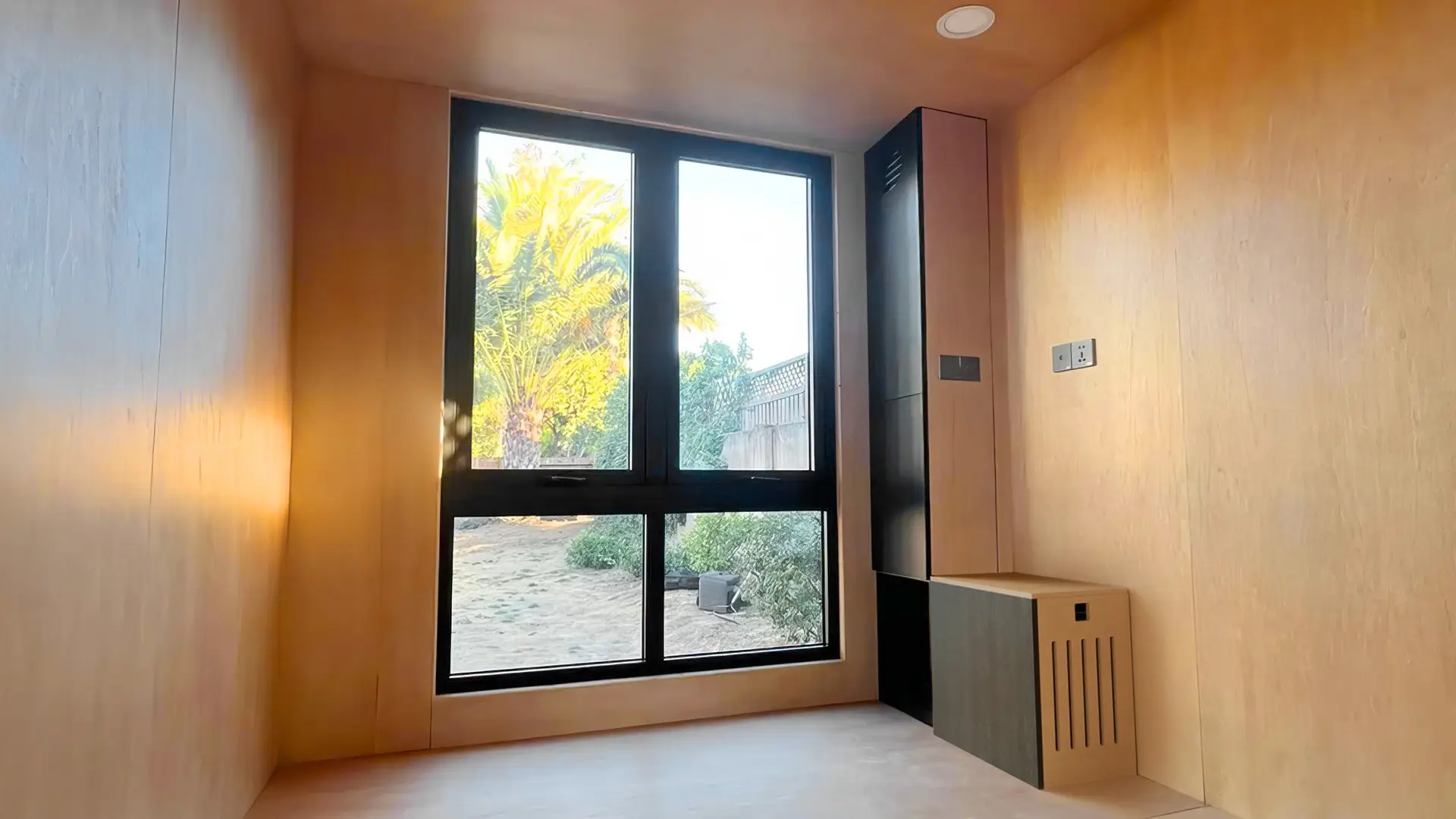
Choosing the Right Insulation for Your She Shed
Selecting the right insulation material depends on your climate, budget, and how you plan to use the shed:
1. Fiberglass Batts
Widely used and cost-effective, fiberglass batts are easy to install and provide decent thermal resistance. However, they can absorb moisture if the shed isn’t well-sealed, which may lead to mold or reduced insulation performance over time.
2. Rigid Foam Panels
Rigid foam offers superior moisture resistance and higher insulation values per inch compared to fiberglass. It also adds some structural strength to the walls. Installation can be more involved and may require sealing joints carefully to maintain effectiveness.
3. Spray Foam Insulation
Spray foam provides excellent air sealing and insulation in one step, expanding to fill gaps and cracks. It’s ideal for irregular spaces but is more expensive and often requires professional installation. Spray foam also acts as a vapor barrier, reducing moisture concerns.
4. Reflective Insulation
In warmer climates, reflective insulation can be added to reduce radiant heat gain. This type of insulation is often combined with other materials for best results.
Consider your region’s climate: colder areas benefit from high R-value materials like spray foam or thick rigid panels, while moderate climates may manage well with fiberglass batts combined with proper sealing. Also, weigh costs and DIY capabilities before selecting a material.
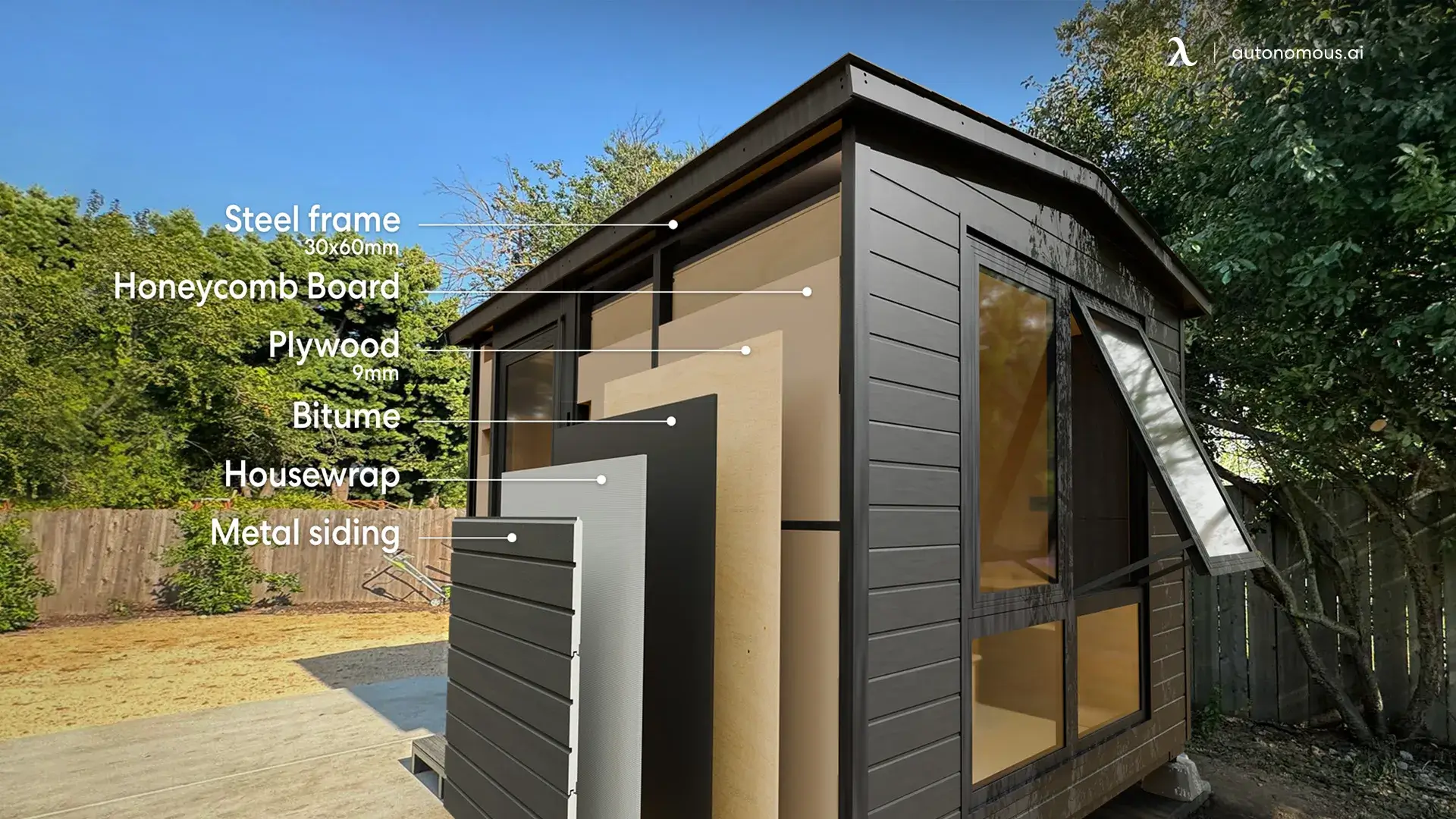
Additional Features to Complement Insulation
Insulation improves comfort and energy efficiency, but adding complementary features enhances your she shed’s durability and livability:
- Proper Ventilation:
Ventilation systems like vents, fans, or operable windows promote continuous airflow. This proactive airflow helps prevent moisture accumulation inside the shed, protecting insulation and wood from damage before it starts.
- Weatherproof Exterior Finishes:
Applying water-resistant paints, stains, or siding shields the shed from rain and UV exposure. These finishes act as the first defense against water intrusion, preserving insulation integrity over time.
- Heating and Cooling Systems:
Efficient climate control systems, such as portable heaters or mini-split AC units, work alongside insulation to maintain a consistent, comfortable temperature year-round. For cooling, small air conditioned sheds are a popular choice. On the heating side, solar-powered options like the solar powered heater for sheds and solar fans for sheds provide eco-friendly alternatives that keep energy use low.
- Soundproofing Enhancements:
Additional soundproofing materials like acoustic panels or heavy curtains further reduce noise, making your shed a quieter retreat. For inspiration on effective noise reduction, check out ideas from top soundproof office pods and tips on how to soundproof your home office.

Maintenance Tips for Insulated She Sheds
Regular upkeep is crucial to detect and fix any issues that may affect insulation performance and shed condition:
- Inspect for Moisture Damage: Periodically check walls, ceilings, and corners for signs of moisture intrusion or mold that may have developed despite preventive measures. Understanding the difference between black mold vs mildew can help you identify and address problems early to avoid costly repairs.
- Seal and Weatherstrip Maintenance: Examine door and window seals for wear or cracks and replace them to keep moisture and drafts out effectively.
- Gutter and Drainage Care: Keep gutters and downspouts clean to prevent water pooling near the foundation, which can lead to moisture problems inside the shed.
- Pest Inspections: Look for signs of pests like wood mites that can damage insulation or wood framing and address infestations promptly.
- Prompt Repairs: Fix any damage to the shed’s exterior or insulation materials quickly to prevent worsening conditions and maintain a weather-tight structure. For guidance on shed materials and durability, see our comparison of metal vs wood sheds and ideas for wood she sheds.

DIY vs Professional Installation
Aspect | DIY Installation | Professional Installation |
Cost | Lower upfront cost | Higher upfront cost |
Expertise Required | Requires knowledge of insulation materials and techniques | Handled by trained experts |
Quality & Sealing | Risk of improper sealing leading to moisture issues | Proper sealing and vapor barrier installation |
Building Code Compliance | May be challenging to ensure compliance | Guaranteed to meet local building codes |
Time & Effort | Time-consuming, especially for beginners | Faster completion due to experience |
Warranty & Support | Usually no warranty | Often comes with warranties or service guarantees |
Risk of Mistakes | Higher chance of errors impacting insulation performance | Minimal risk due to professional oversight |
Tools & Equipment | Need to purchase or rent necessary tools | Professionals provide all tools and materials |
Favorite Insulated She Shed Styles
When it comes to premium insulated she sheds, Autonomous WorkPods stand out as an exceptional choice for anyone looking to create a comfortable, year-round backyard retreat. Designed with high-quality insulation and soundproofing, WorkPods provide a turnkey solution that combines modern aesthetics with functional design.
Built with advanced materials to maintain optimal indoor temperatures regardless of the season, ensuring comfort throughout the year. This makes them perfect for creative spaces like a backyard art studio where temperature control is essential for both comfort and preserving materials.
- Soundproofing:
Keeps external noise out, creating a peaceful and focused environment ideal for a dedicated office she shed, a tranquil backyard meditation space, or a productive backyard home office.
- Solar Options:
Models like the WorkPod Solar and WorkPod Versatile Solar come equipped with integrated solar panels, offering energy-efficient, off-grid capability.
- Flexible Sizes:
From the compact WorkPod Mini, perfect for cozy she shed craft rooms and intimate woman caves, to the spacious WorkPod Versatile designed for both work and leisure, there’s a model for every need.
- Ready to Use:
Delivered fully assembled or in modular panels, these sheds make setup quick and hassle-free without sacrificing quality.
- Climate Control Compatibility:
Easily outfitted with heating and cooling solutions to maintain year-round comfort, enhancing your experience in a backyard retreat or while enjoying relaxing backyard ideas.
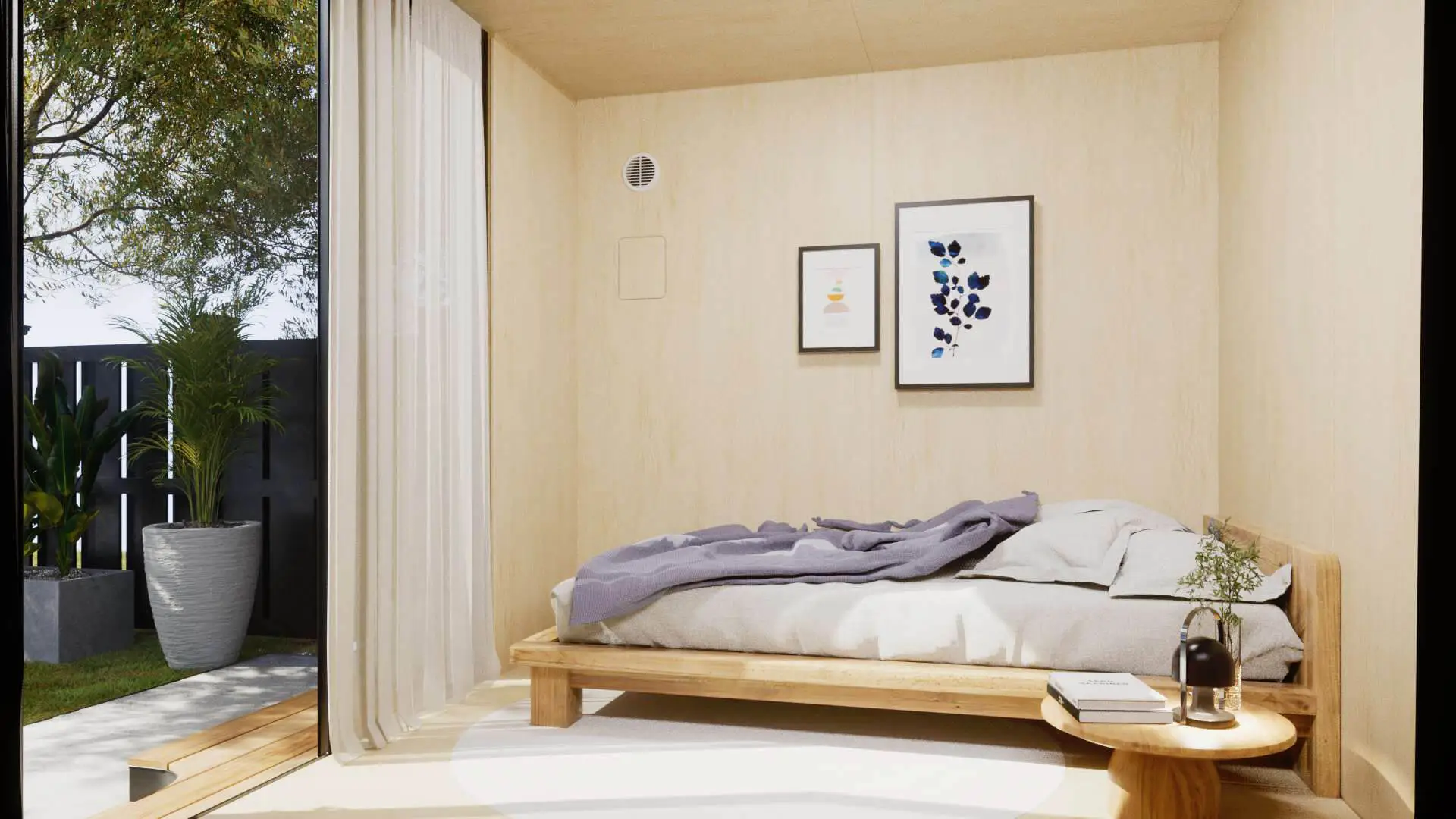
FAQs
Can I insulate a she shed myself, or should I hire a professional?
DIY insulation is possible if you have basic construction skills and understand insulation materials. However, professionals ensure proper installation, airtight sealing, and compliance with building codes, reducing the risk of moisture issues and improving long-term performance.
How much does it typically cost to insulate a she shed?
Costs vary based on size, insulation type, and whether you install it yourself or hire professionals. Fiberglass batts are generally affordable, while spray foam is pricier but offers superior sealing.
On average, insulating a small she shed can range from a few hundred to a few thousand dollars. Smaller spaces, such as a 10x10 she shed, have their own design considerations that can influence insulation choices and costs.
What insulation material is best for a she shed in a cold climate?
In colder regions, high R-value materials like spray foam or thick rigid foam panels are recommended. These materials provide excellent thermal resistance and air sealing to keep the shed warm during winter months.
Does insulating a she shed help with noise reduction?
Yes. Insulation materials absorb sound waves, reducing noise transmission. Combined with additional soundproofing measures like acoustic panels or heavy curtains, it creates a quieter, more peaceful environment.
Can I install electricity in an insulated she shed?
Absolutely. Insulated she sheds often include or can be upgraded with electrical wiring to power lighting, heating, cooling, and electronic devices. For those interested in climate control, options like a she shed with AC provide year-round comfort.Always use a licensed electrician to ensure safety and code compliance when adding electricity to your shed, as detailed in guides about she sheds with electricity.
How long does it take to insulate a she shed?
Insulation installation time depends on the shed size and method. For a small to medium shed, professional installation may take one to two days, while a DIY project could take several days depending on experience.
Are prefab insulated she shed kits easy to assemble?
Prefab kits are designed for straightforward assembly, often including pre-insulated panels and detailed instructions. They offer a convenient option for those seeking quality insulation without the complexity of custom builds.
For ideas on making the most of your space, consider she shed interior design tips. If you’re exploring options, check out some of the cool prefab she sheds available on the market.
What maintenance does insulation in a she shed require?
Maintenance includes regular inspections for moisture damage or mold, checking seals on doors and windows, and ensuring gutters and drainage systems are functioning properly to prevent water intrusion.
Can insulation in a she shed degrade over time?
Yes, especially if exposed to moisture, pests, or physical damage. Proper installation, ventilation, and maintenance are key to preserving insulation performance over many years.
Does insulation add value to my property?
A well-insulated, functional she shed increases your property’s appeal by providing a comfortable, usable outdoor space year-round, which can be a strong selling point.
Can I insulate a she shed that is already finished inside?
Retrofitting insulation in finished sheds is possible but more challenging. It may require removing interior panels or adding insulation boards on interior surfaces, while ensuring ventilation to avoid moisture problems.
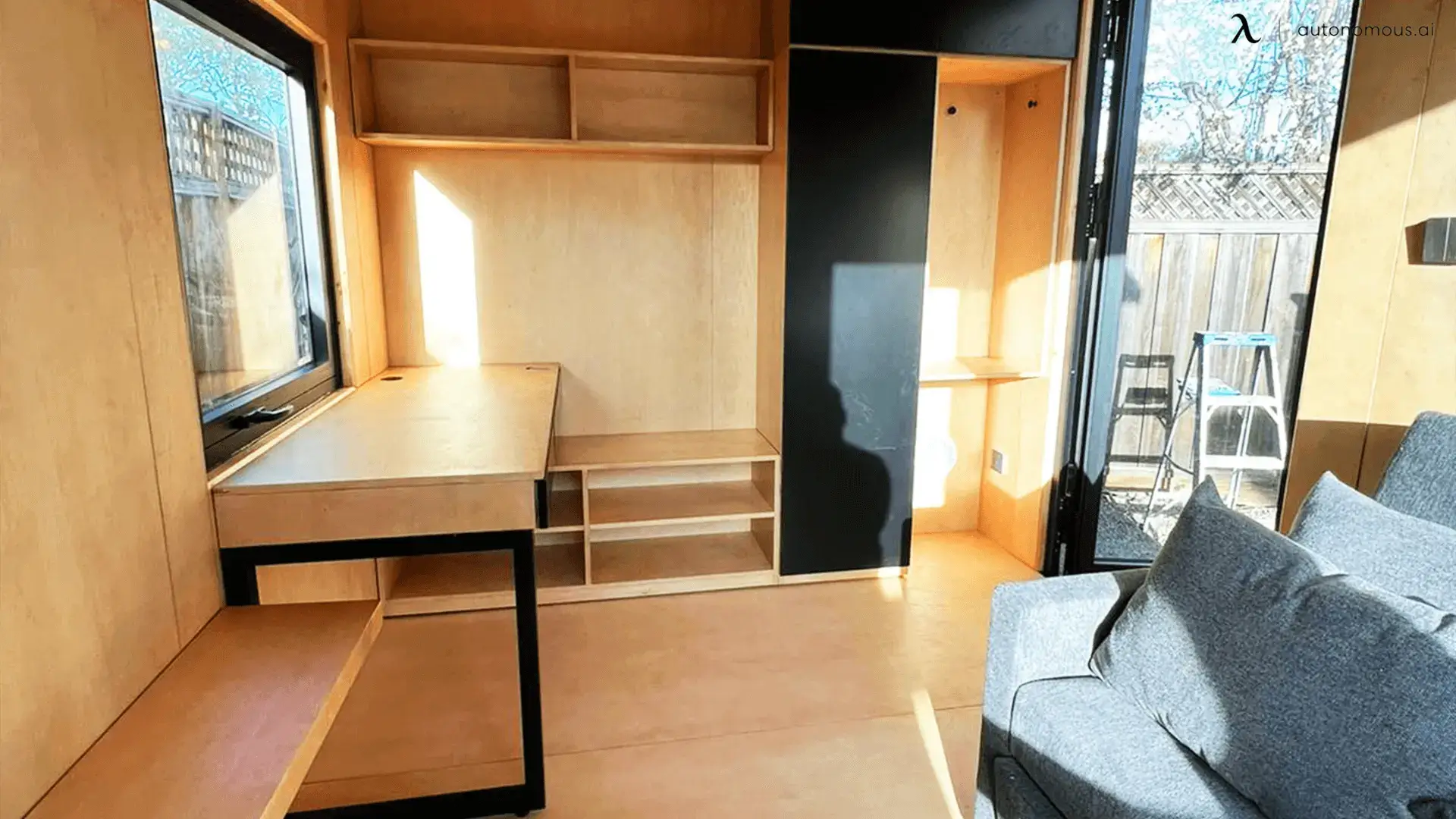
Is spray foam insulation better than fiberglass for she sheds?
Spray foam offers superior air sealing and higher R-values, making it more effective in extreme climates. Fiberglass is cheaper and easier to install but less effective at preventing air leaks.
How do I keep my insulated she shed pest-free?
Seal all gaps and cracks to prevent pest entry, use pest-resistant insulation where possible, and regularly inspect for signs of infestation. Address any issues promptly to avoid damage.
What ventilation options work best with insulated she sheds?
Options include passive vents, exhaust fans, operable windows, or even small HVAC systems that ensure air circulation without compromising insulation integrity.
Can I add insulation to just the walls, or should I insulate the roof and floor as well?
For optimal comfort and energy efficiency, insulate all surfaces that separate the shed interior from the outside—walls, roof, and floor. Neglecting any area can create cold spots and reduce overall effectiveness.

Conclusion
Insulating your she shed is essential to creating a comfortable, functional space that you can enjoy year-round. Whether you’re building from scratch, upgrading an existing structure, or selecting a prefab insulated she shed kit, proper insulation plays a crucial role in maintaining energy efficiency, regulating temperature, and reducing noise. Beyond comfort, a well-insulated she shed adds value to your property and opens up a variety of uses—from a peaceful retreat to a productive workspace. Investing time and effort in quality insulation ensures your backyard haven remains inviting and practical no matter the season.
For creative inspiration on transforming your she shed into a cozy art space, check out these she shed art studio ideas.
Spread the word
.svg)

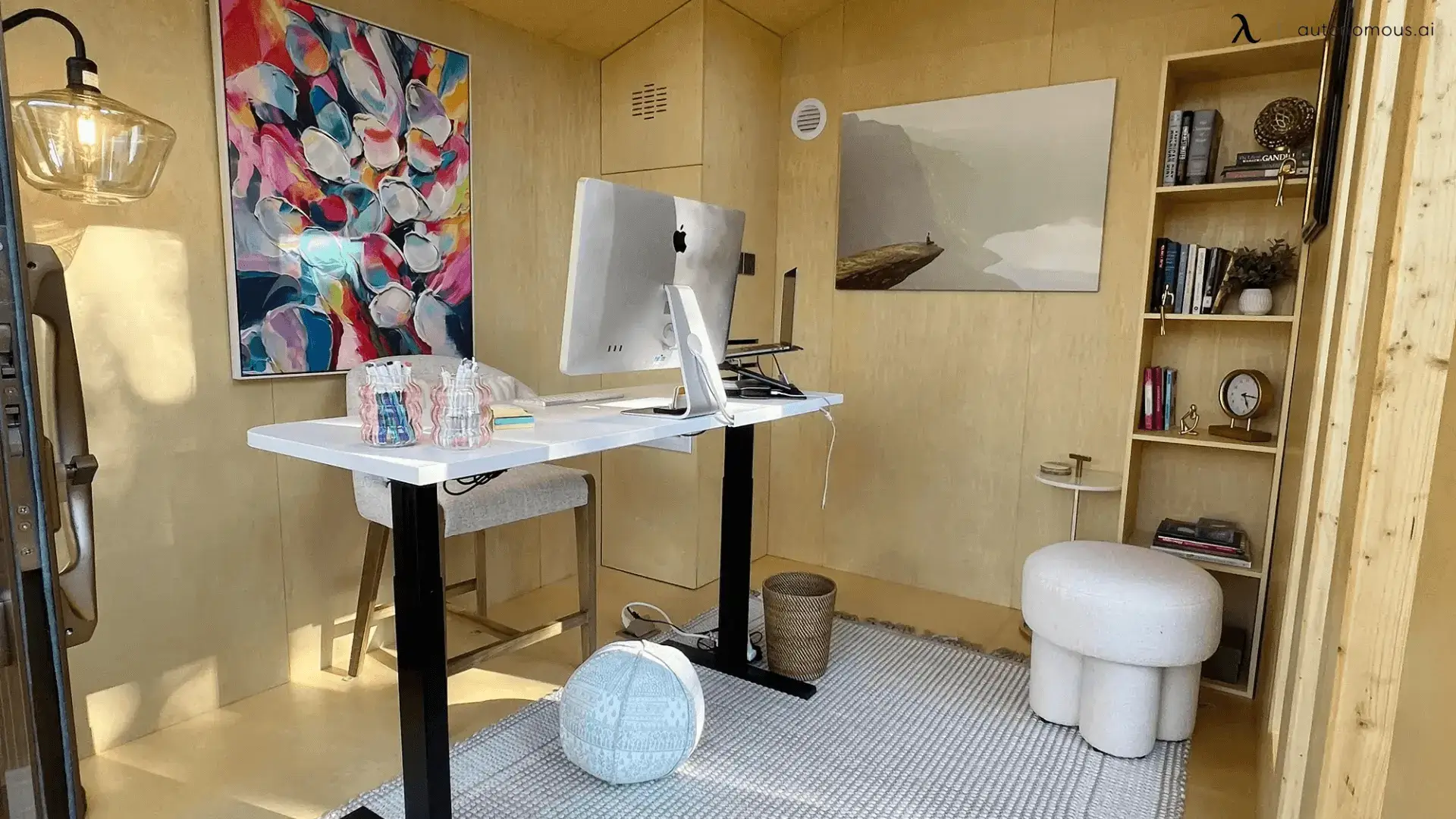


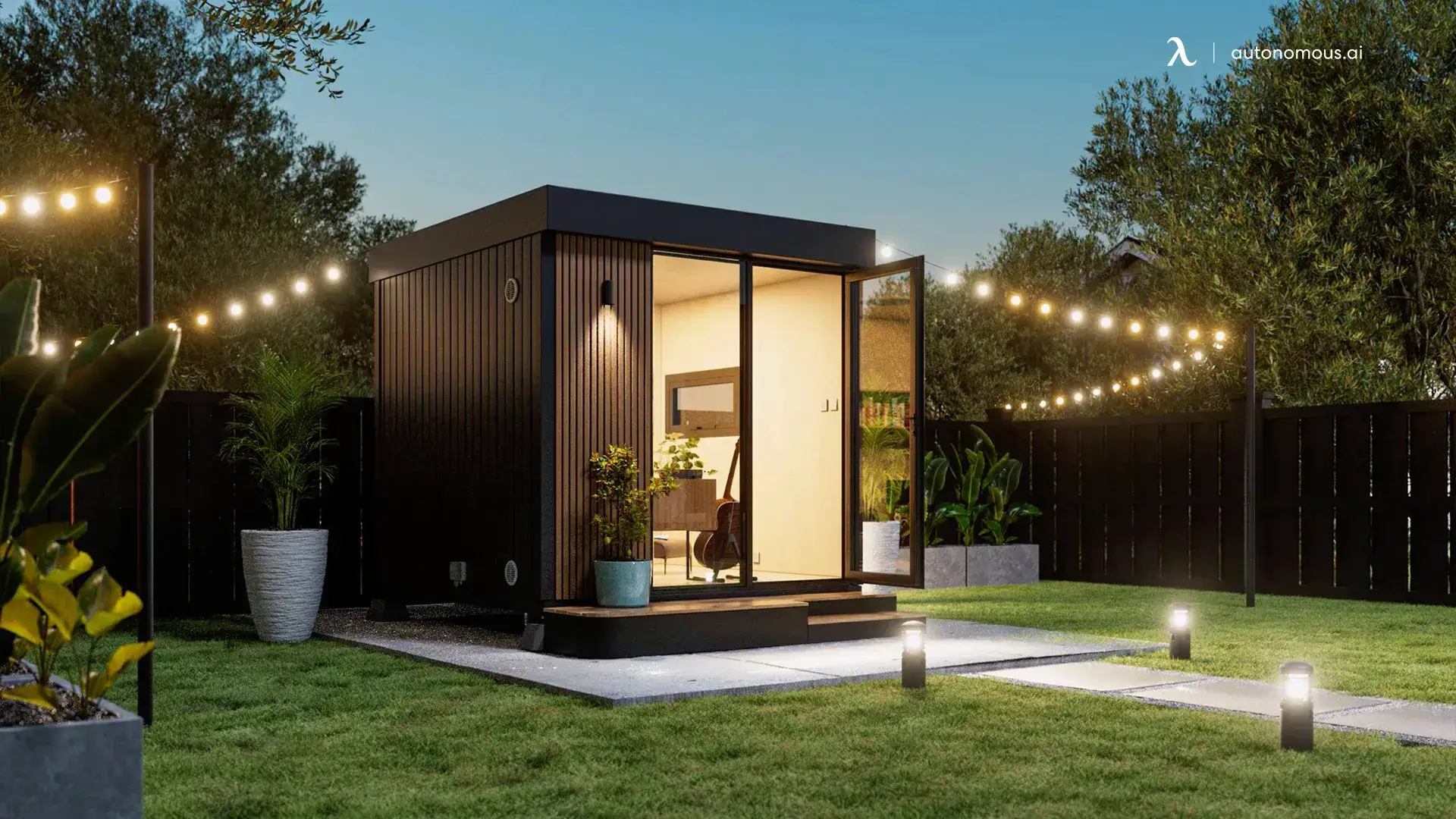

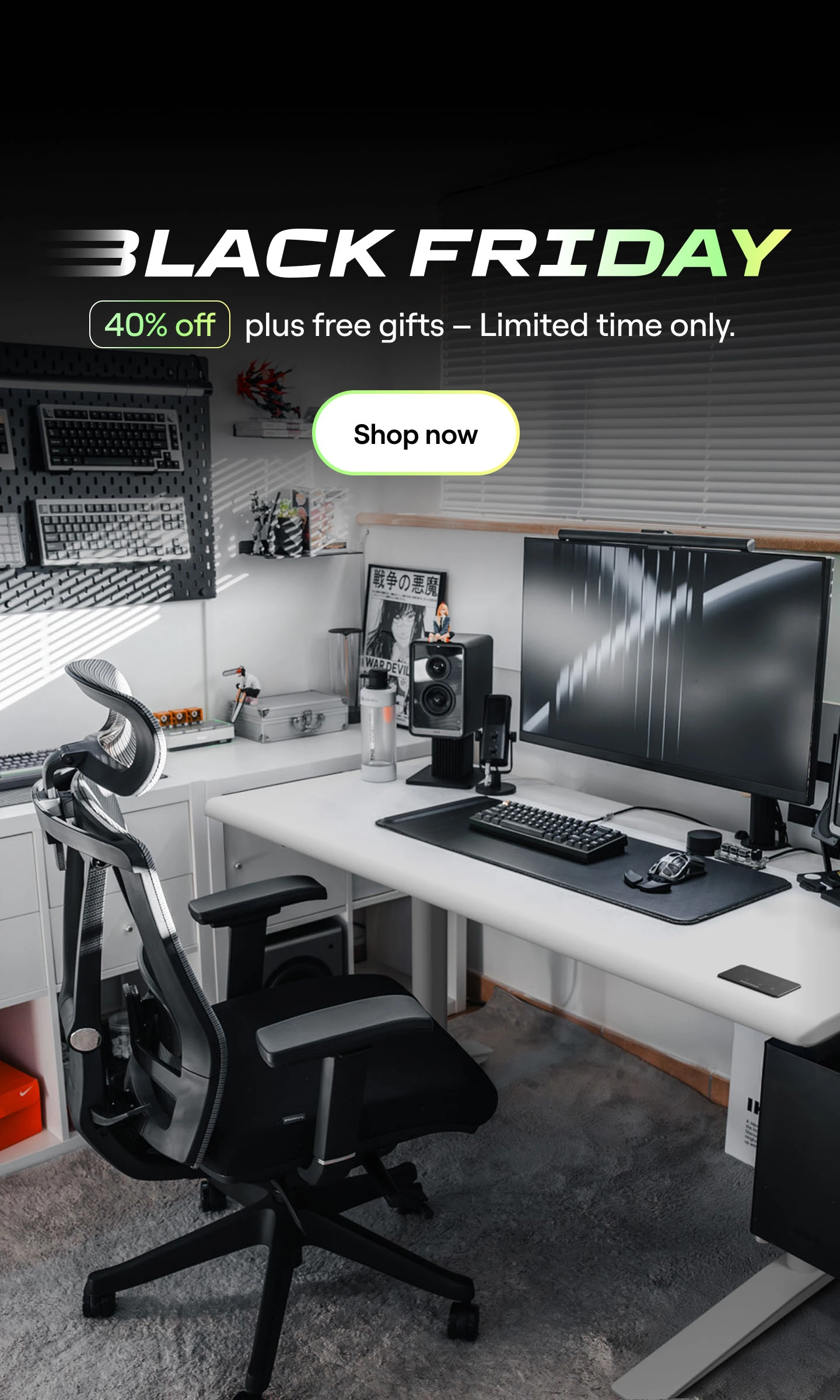
(1).webp)
